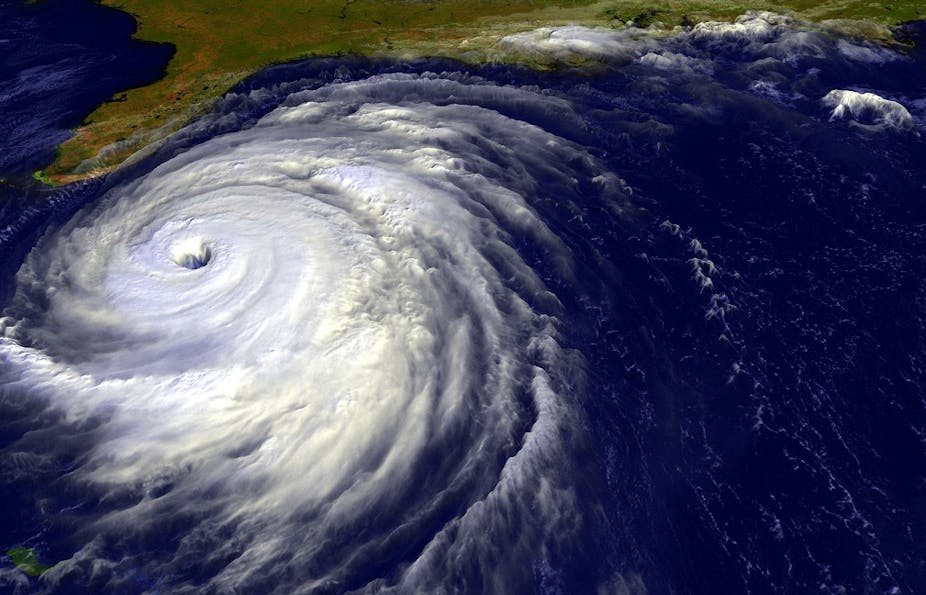The IPCC’s latest climate change report has made it clear that global temperature rises will be the cause of more extreme weather events around the world. Indeed, weather disasters increasingly provoke the question: “Was this event (directly) caused by anthropogenic climate change?” – as was the case with the flooding that struck the UK this winter.
Although this question is scientifically interesting and important for long-term climate forecasting and measuring how humans are influencing the planet, the answers require many months of research. Answering the question of whether or not an extreme weather event is caused by climate change is also not necessarily helpful for preventing such disasters from happening again. Powerful and potentially damaging storms occurred before we evolved onto this planet, and such storms would still occur even if all emissions of greenhouse gases were stopped tomorrow.
This admission does not negate the reality of man-made climate change, just that extreme weather does not demonstrate climate change in the same way that increasing carbon dioxide concentrations in the atmosphere or increasing global average temperatures over time do. Reducing emissions and stabilising the climate for future generations remains the priority, but these should not take place at the expense of developing resilience to individual weather events. Rather, both need urgent attention.
Weather is the noise in climate
For many types of extreme weather events (windstorms, tornadoes, hurricanes, thunderstorms), their projected increases over time due to anthropogenic climate change is much smaller than the year-to-year variability in their occurrences. For example, a report from the Geophysical Fluid Dynamics Laboratory in Princeton concluded that the maximum intensity of hurricanes would increase by only about 5% by 2100. Plus, detecting any trend in the observations would not be possible for several more decades because many more years of data will be required to see any climate trends over the noise of fluctuations in the weather.
From this perspective, there is little to be gained by conflating extreme weather events and climate change. Society should reduce its impact on the planet, but it should also take steps to protect itself from weather disasters.
Each year, hurricanes sweep their way up America’s Atlantic coast and this annual event must be planned for accordingly in the areas that will be hit. Similiarly, flooding has historically happened in Somerset. Recognising this reality is key to reducing the potential damages. Weather resilience includes making sensible planning decisions such as building away from floodplains and other vulnerable locations.
Effective policy
By framing weather disasters as a result of a changing climate, decision-makers may risk otherwise sensible policies as not imperative for action. Or, political differences may lead to sensible action being thwarted.
Consider the $1 billion Climate Resilience Fund proposed in the US by Barack Obama. The reasons given in its announcement were: “A changing climate means that weather-related disasters like droughts, wildfires, storms, floods are potentially going to be costlier and they’re going to be harsher.”
This kind of reasoning runs the risk of being rejected by climate change sceptics. If it was a “Weather Resilience Fund”, then the proposal might have a better chance of surviving the Republican House of Representatives. The fund’s aim to “better understand the projected impacts of climate change” gives sceptics more reason to doubt the project, even though much of the focus would be on combating extreme, regularly occurring weather events. Clearly this is something both sides of the aisle would rally behind.
Localised weather forecasting
Investments in building resilience and weather preparedness is a no-regret policy that might also have benefits at mitigating against climate change. By becoming more resilient to weather events, we also put the focus on adapting to specific geographical threats locally where people live.
For example, planting more trees in cities or painting roofs lighter colours to offset the urban heat island will also lead to reduced air-conditioning costs. In turn, this reduces carbon emissions and produces a benefit to the local weather and global climate. Also, strategies like building outside of the floodplain will reduce the carbon emissions from rebuilding when disaster inevitably strikes.
There is no single quick-fix or single-cause solution to the problem of human vulnerability to environmental changes. Nor will we ever be able to mitigate completely against natural disasters. The first step is recognising that looking for solutions to weather disasters by addressing climate change is not necessarily the best use of resources. But, there are sensible approaches that can be implemented now to address both.

